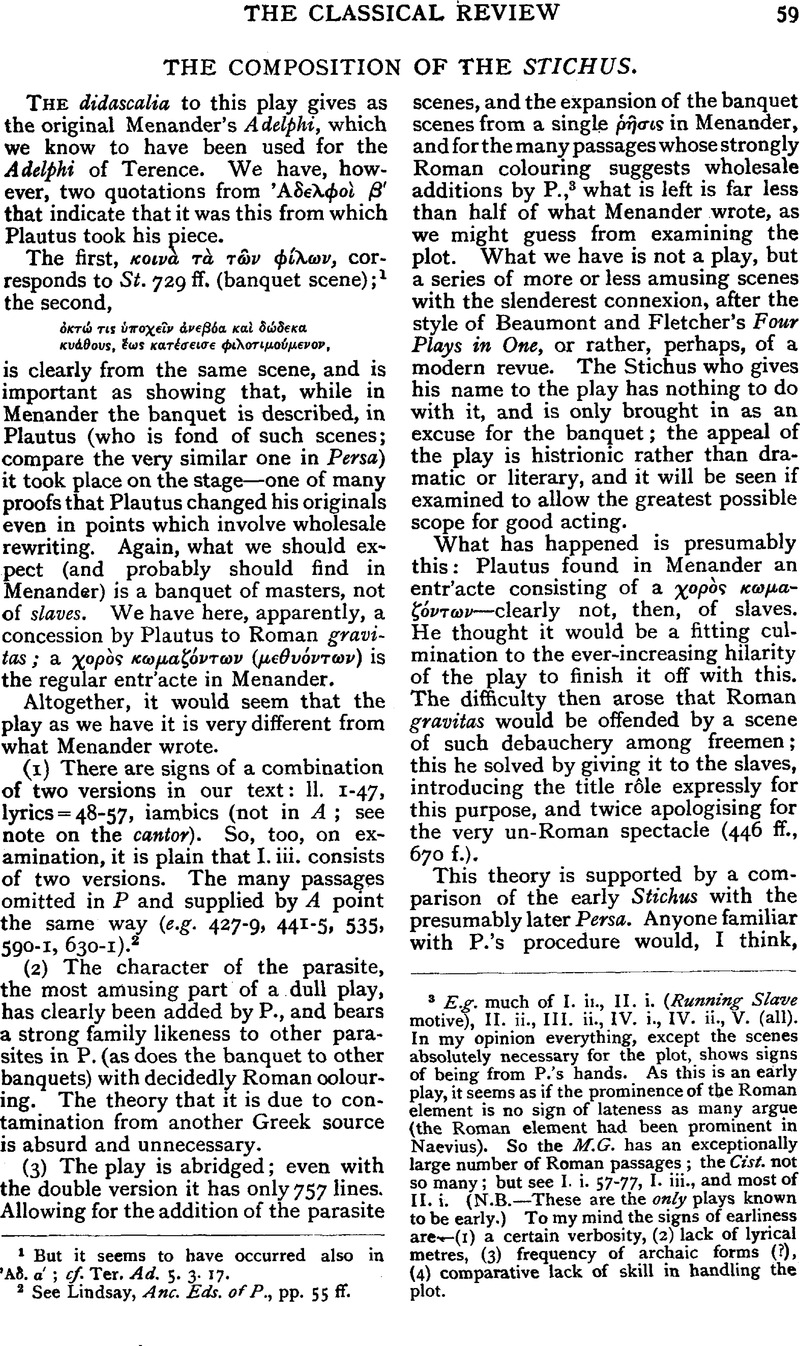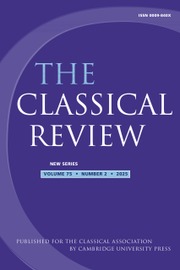No CrossRef data available.
Article contents
The Composition of the Stichus.
Published online by Cambridge University Press: 27 October 2009
Abstract

- Type
- Review Article
- Information
- Copyright
- Copyright © The Classical Association 1925
References
1 But it seems to have occurred also in Ἀδ. á; cf. Ter. Ad. 5. 3. 17.
2 See Lindsay, , Anc. Eds. of P., pp. 55 ff.Google Scholar
3 E.g. much of I. ii., II. i. (Running Slave motive), II. ii., III. ii., IV. i., IV. ii., V. (all). In my opinion everything, except the scenes absolutely necessary for the plot, shows signs of being from P.'s hands. As this is an early play, it seems as if the prominence of the Roman element is no sign of lateness as many argue (the Roman element had been prominent in Naevius). So the M.G. has an exceptionally large number of Roman passages; the Cist. not so many; but see I. i. 57–77, I. iii., and most of II. i. (N.B.—These are the only plays known to be early.) To my mind the signs of earliness are—(1) a certain verbosity, (2) lack of lyrical metres, (3) frequency of archaic forms (?), (4) comparative lack of skill in handling the plot.


